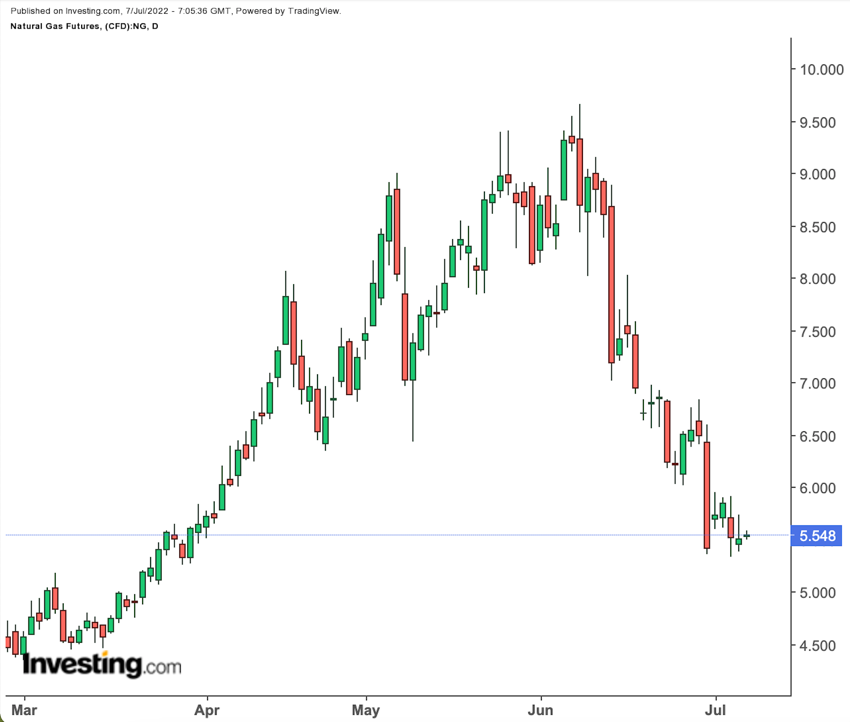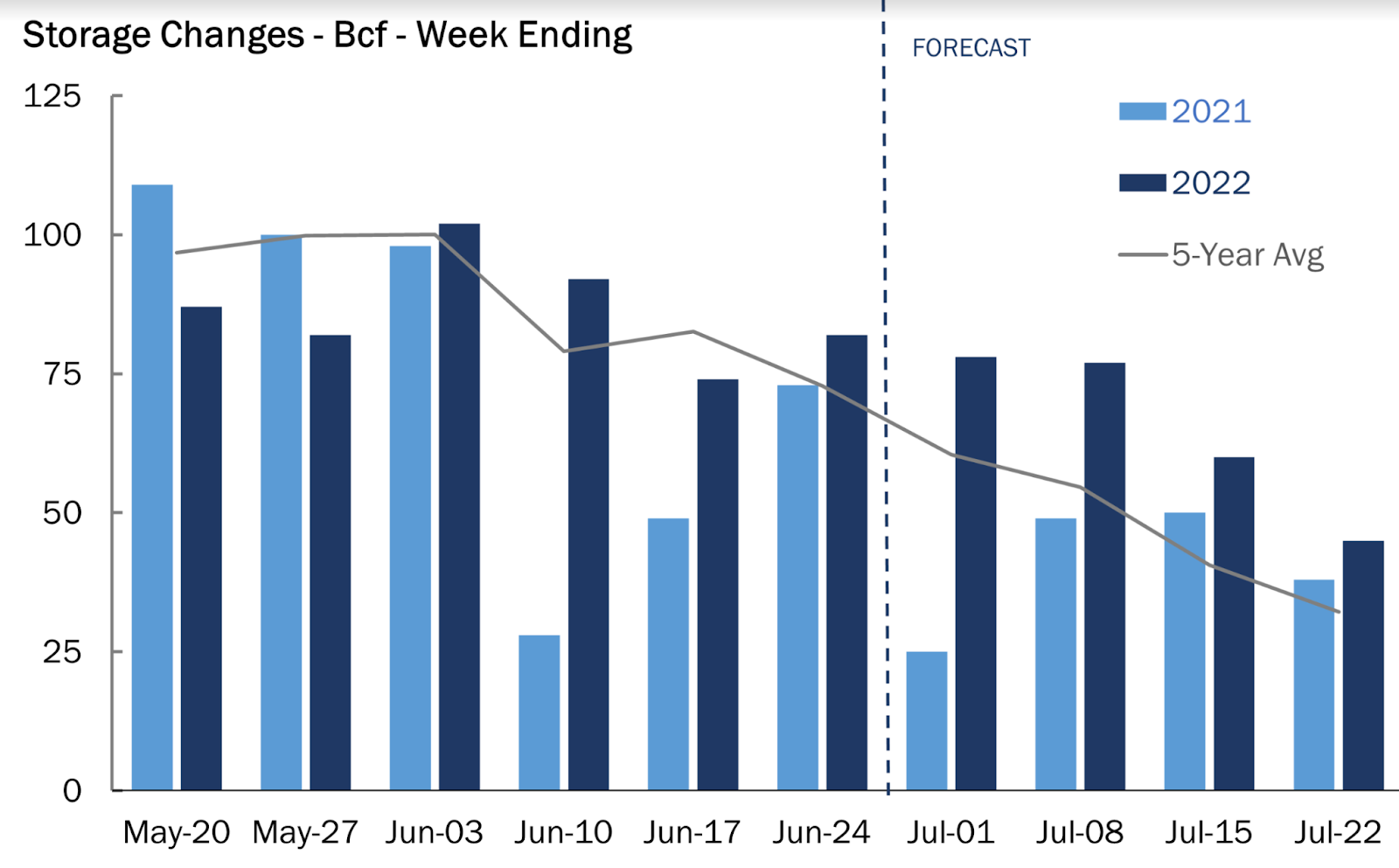The average American is cranking the air conditioner up more than ever since summer began, and the next ten days are forecast to be sweltering.
Yet, it might not be enough to prevent another selloff in natural gas before the end of the week as outsize supply keeps filling underground caverns for the fuel—despite inordinate burns by utilities to meet demand for power generation and cooling.

While national demand for gas is expected to ease to near normal by the July 15-17 weekend, intense heat is expected over the next few days across the United States, delivering some 80 to 100 Fahrenheit across a majority of the Lower 48 states, NatGasWeather said in a forecast carried by naturalgasintel.com.
Coinciding with the heat wave will be weakening gas production due to maintenance and operational issues in the Northeast, Appalachia, and Gulf South areas among others.
As a result of the two factors, Wednesday’s output alone may have seen “a significant decline” of 1.8 billion cubic feet (bcf) to reach 94.2 bcf, Wood Mackenzie analyst Laura Munder estimated.
The production drop essentially provides some “fundamental cover” for gas futures on New York’s Henry Hub, which plunged almost 6% the previous session in line with this week’s selloff in oil and most other commodities due to fears of a US recession, EBW Analytics Group senior analyst Eli Rubin said.
Yet, in the words of naturalgasintel, the heat wave and weakening production might “not [be] enough to offset analysts’ expectations for a robust storage increase relative to the five-year average,” partly due to the Freeport phenomenon.
Freeport, an LNG plant on the Texas Gulf Coast, used to account for around 20% of all US liquefied natural gas processing, consuming up to 2.1 bcf of natural gas per day. That was before a June 8 explosion at the plant that has rendered it inoperable until October, the company said.
Prior to the Freeport crisis, analysts had expected a deficit of 300 bcf or more in the five-year average for gas storage.
Europe’s ban of Russian gas in the aftermath of Moscow’s invasion of Ukraine led to unprecedented demand for US LNG from Europe, sending the Henry Hub up 150% on the year as the exchange’s most active contract hit 14-year highs of $9.66.
By Wednesday though, futures on the Henry Hub were headed for a fourth straight week of losses that had cumulatively wiped almost 38% off the market’s value since the week ended June 3. The hub’s most active contract, August, itself settled Wednesday at $5.51.
Now, with Freeport out of the game until October, guessing how summer gas demand would fare and how much of that would be offset by what Freeport won’t be liquefying has become a challenge.
“Despite the robust demand, week-over-week changes in the fundamentals favored supply,” analysts at Houston-based gas markets consultancy Gelber & Associates told clients of the firm in an email on Wednesday that was also seen by Investing.com.

Source: Gelber & Associates
Ahead of Thursday’s weekly gas storage report from the US Energy Information Administration, analysts tracked by Investing.com have predicted a larger-than-usual 74 bcf storage build for the week ended July 1.
If accurate, the build would far exceed the storage injection of 25 bcf during the same week a year ago and a five-year (2017-2021) average injection of 60 bcf.
In the prior week, utilities added 82 bcf of gas to storage.
The injection analysts forecast for the week ended July 1 would lift stockpiles to 2.325 trillion cubic feet, about 11.7% below the five-year average and 9.6% below the same week a year ago.
In terms of the weather itself, Reuters-associated data provider Refinitiv said there were around 86 cooling degree days (CDDs) last week, more than the 30-year norm of 77 CDDs for the period.
CDDs, used to estimate demand to cool homes and businesses, measure the number of degrees a day's average temperature is above 65 degrees Fahrenheit.
Disclaimer: Barani Krishnan uses a range of views outside his own to bring diversity to his analysis of any market. For neutrality, he sometimes presents contrarian views and market variables. He does not hold positions in the commodities and securities he writes about.
